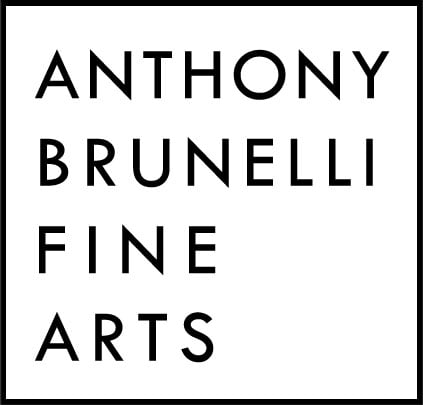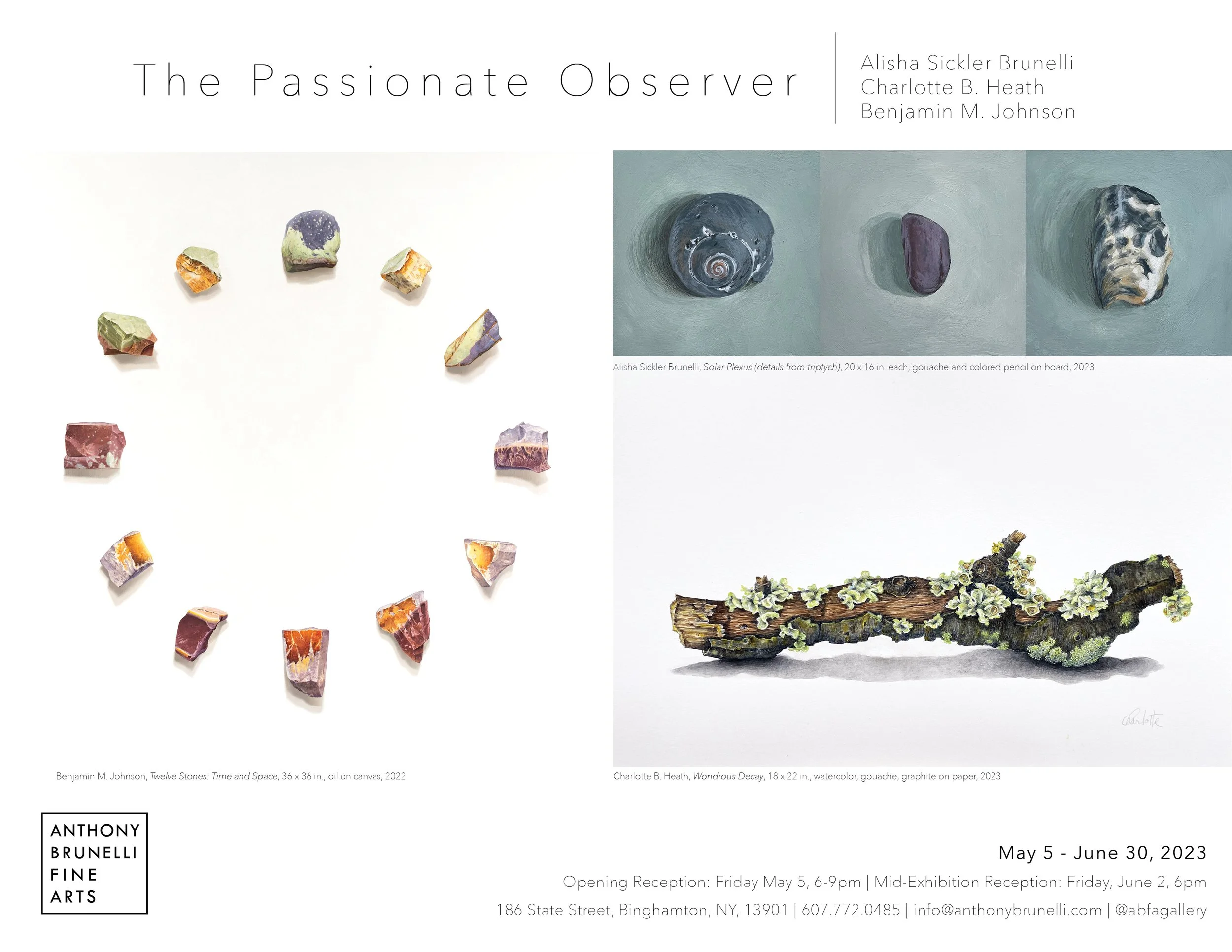The Passionate Observer
5 May - 30 June 2023
Press Release:
Looking through the lens of 3 contemporary American artists who view our natural world with inquiry, curiosity and wonder. The exhibition title is inspired by the writings of French naturalist & entomologist, Jean-Henri Fabre (1823-1915).
In her series, Having, Doing, Being, Alisha Sickler Brunelli (American, b. 1979) explores our relationships to states of consciousness and objects as metaphysical containers/vessels. Everyday objects, and common object shapes reference materialism, consumption, beliefs around transformation, and effability/ineffability. Through an examination of our personal relationships to the physical world, we bring attention to inner planes of human existence.
A new painting by Benjamin M. Johnson (American, b. 1976), The Forest GivesThanks to The Mosses, depicts a carefully composed arrangement of four natural objects against a minimal white background. Each object is isolated in space yet tied together through their considered arrangement. A splinter of wood with moss attached, a stone, and a pine needle cluster rest above a curved branch stripped of its bark. This painting was inspired by Japanese ikebana paintings where, not unlike sculpture, considerations of color, line, form and function guide the construction of the work.
Charlotte B. Heath (American, b. 1952) stays true to the eye of a traditional naturalist like Audubon yet offers something different than contemporary artist, James Prosek in her series of 7 trout watercolor paintings. Her interest in the variations and subtleties of vibrancy and luminescence across the variety of species is further enhanced by her choice in substrate between traditional watercolor paper and those she painted on deer-skin vellum. This series is coupled with her observations of forest fauna and other avian inspirations. In her painting, Wondrous Decay, Heath's subject is a Pin Oak branch with both Crustose lichen and Macro lichen. Heath is fascinated with the world of Lichens and their relations between fungi and communities of microscopic bacteria or algae.
One of the unifying threads between the three artists is their use of isolated objects for inquiry, study and composition.
"The observer must neglect nothing: he never knows what the humblest fact may bring forth. From early childhood, from the moment of my first mental awakening, I have felt drawn towards things of nature, or, the return to our catchword, I have the gift, the bump of observation." - Jean-Heri Fabre (1923 - 1915), French naturalist, entomologist

